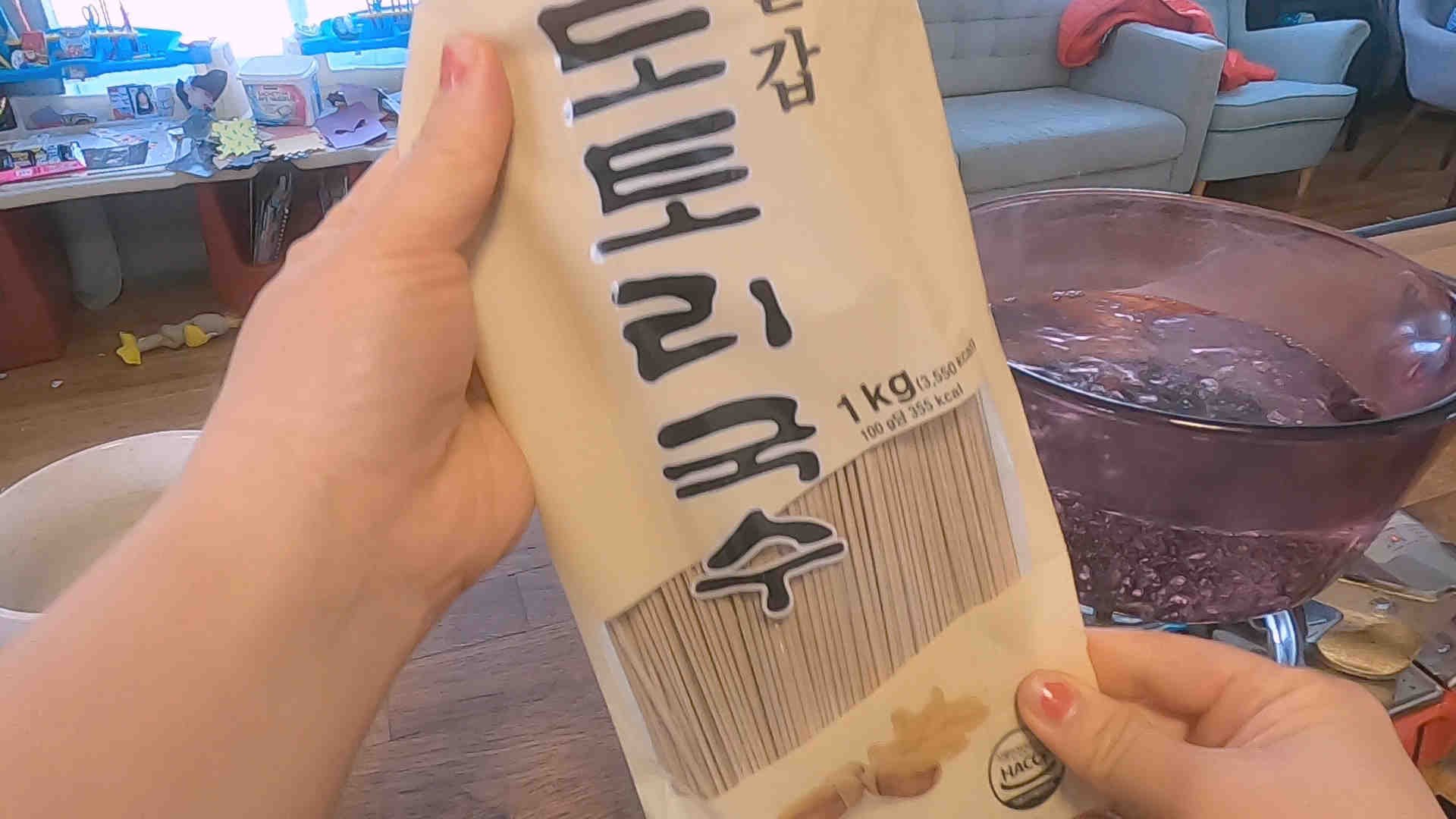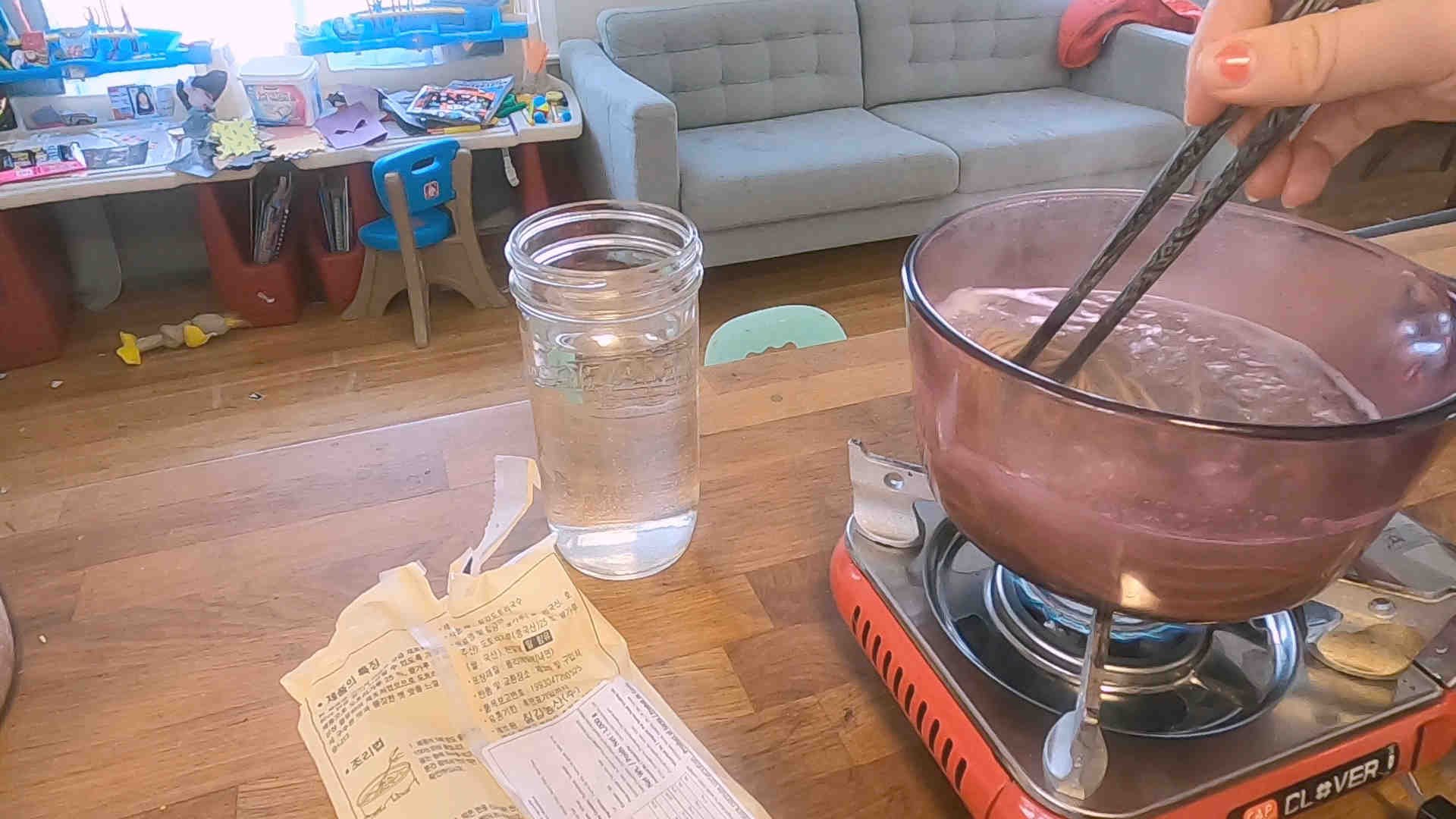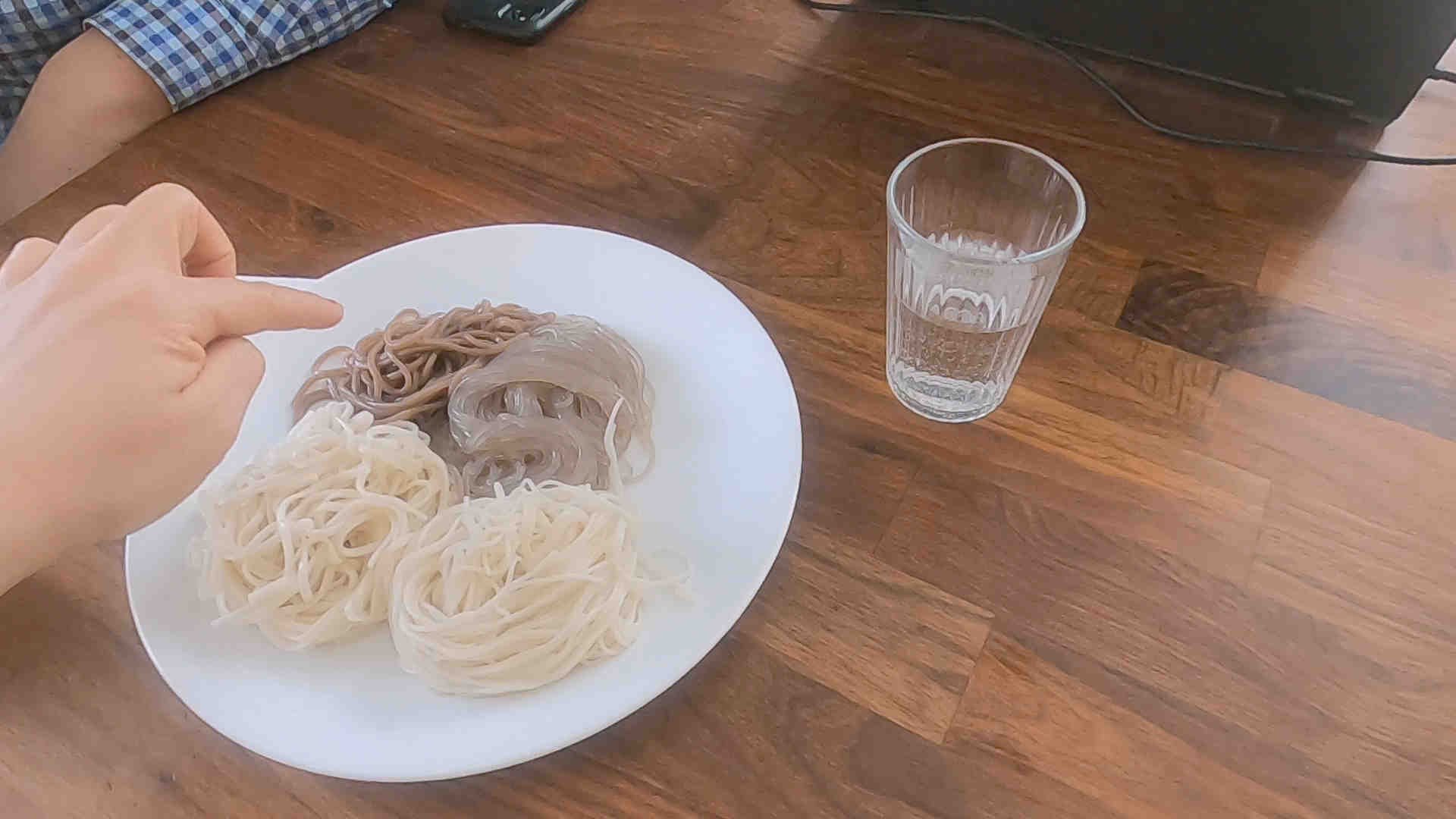What are DOTORI Noodles?
Eating Acorns in Korea
Dotori in Korean means Acorns. Have you ever eaten acorns? You know, the squirrel’s nut of choice (unverified: I actually do not know for a fact that this is the squirrel’s favourite nut).
Koreans have been eating acorns since (insert Lion King opening music) the beginning of time. Exaggeration, but it’s a very commonly used food ingredient. It’s considered a superfood and people will forage for them every season.
So much so that humans and squirrels in Korea fight over it (read “Humans Are… Driving Squirrels Nuts” Wall Street Journal) lol. Seriously though, acorns are a healthy nut and can be part of a nutritious diet.
The most common way we eat Acorns in our family is through Acorn Jelly (Dotori Muk video here). Acorns are ground into powder and boiled until it thickens. When cooled it’s sliced and eaten with a savoury soy sauce-based dressing. We buy it often at the Korean grocery store because they sell it ready-to-eat.
Commercial powders (they look like this) will often have fillers (like wheat) and possibly starch added because… it’s made in a factory by companies that prioritize profit 🙄.
In Korea, many people will have personal “connections” to local neighbours/relatives/family that will know someone (who knows someone) who has personally foraged them to get a 100% acorn powder.
I may despise big food corporations, however, can’t deny their offered advantage of accessibility. For those of us without Korean forager connections, we can still get an idea of what we’re missing by trying it out in conveniently packaged products.
Dotori Guksu aka Acorn Noodles
This is a relatively new product I found at the Korean grocery. They are the basic Korean noodle with added Dotori powder! I thought this was pretty cool because we already love the flavours of Dotori.
These noodles are mostly wheat noodles with added acorn powder.
Help Me Pronounce It!
도토리 “Doh-Tory”
Boiling Dotori Guksu
I usually do the 3x Boiling Method with my Korean noodles (like here ) but I found maybe because the wheat ratio is lower in these noodles, they don’t froth up to require a shot of cold water.
I just continuously stirred it so the noodles didn’t get a chance to sit at the bottom and stick. I’d say it took a good 5 minutes in a hard boil for it to be done. I taste tested to be sure though.
Like all other Korean noodles, drain and rinse immediately with icy cold water to stop the cooking process and prevent sticking.
Wrap them around your hand as best you can to form little “nests” and this way it will be easy to pick up a bundle and portion them out later.
As you can see, other than glass noodles, Korean noodles are pretty similar with only a difference in thickness. They are simply noodles made with flour and water (and salt) which really makes it a preferential choice to which you like to eat.
Dotori adds a nice punch of colour from the plain white noodles, doesn’t it?
Personally, I prefer the very thin Somyeon noodles for most dishes, but the point is, if you pick up the “wrong” package by mistake, it’s not unusable. Using them interchangeably may not be “correct” or “proper” but being properly correct is overrated anyway.
How to Eat Dotori Guksu
Like my rule for any Korean noodle, I serve it either in a broth or dress it in sauce.
My go-to broth for Korean noodles is usually dried anchovy based. Drop a bunch of dried anchovies in boiling water and add salt. Done. You can also buy pre-packs of anchovy broth-making pouches like these. Easy peasy lemon squeezy.
If you have dried Dasima (dried kelp), pop some in as well. If you have dried mushrooms, add in a couple (Be conservative with dried mushrooms! They pack a surprising punch of flavour!)
Alternatively, when the kids have the sniffles, I like to put noodles in chicken broth. The Korean style is to boil chicken (better if bone-in) with plenty of salt and plenty of garlic. I believe in the power of garlic, guys 🤭.
If you want to try the Super Korean Illness-Fighting Chicken Soup (aka Samgyetang), try a kit like this, all you need is chicken, water and salt. And garlic. Pleeeenty of galic.
SIMPLISTIC KOREAN NOODLE SAUCE
The two sauces I use to dress noodles are either Gochujang-based (spicy) or Soy sauce based (non-spicy).
Gochujang Sauce: Add honey to gochujang (to taste), drizzle toasted sesame oil for desired consistency and mix into noodles.
Add julienned veg of your choice. The usual suspect being carrots, cukes, lettuce, cabbage.
Soy Sauce… Sauce: Mix equal amounts soy sauce and toasted sesame oil. If you’ve got all-purpose soy sauce like Jin Ganjang it should already be sweet. If all you have is Soup soy sauce (Guk Ganjang), it may need to be watered down and sweetened with sugar or honey. If you just like it extra-sweet, just add honey/sugar until it tastes delicious to you. Mix into noodles.
Note: Ganjang translates to Soy Sauce.
I usually crumble dried and seasoned seaweed sheets (Gim) like those Gim snack packs you see at Costco on top right before serving. Toasted sesame seeds are always a nice touch.
Legit Recipes for Korean Noodles
Chef Chris Cho eats Dotori noodles with Beansprout Soup
Korean Party Noodles by Korean Bapsang (use Dotori noodles instead)
My Korean Kitchen makes Bibim Guksu (just swap out for Dotori noodles)
Kimchimari makes Soy Sauce Bibim Guksu (try it with Dotori noodles)







